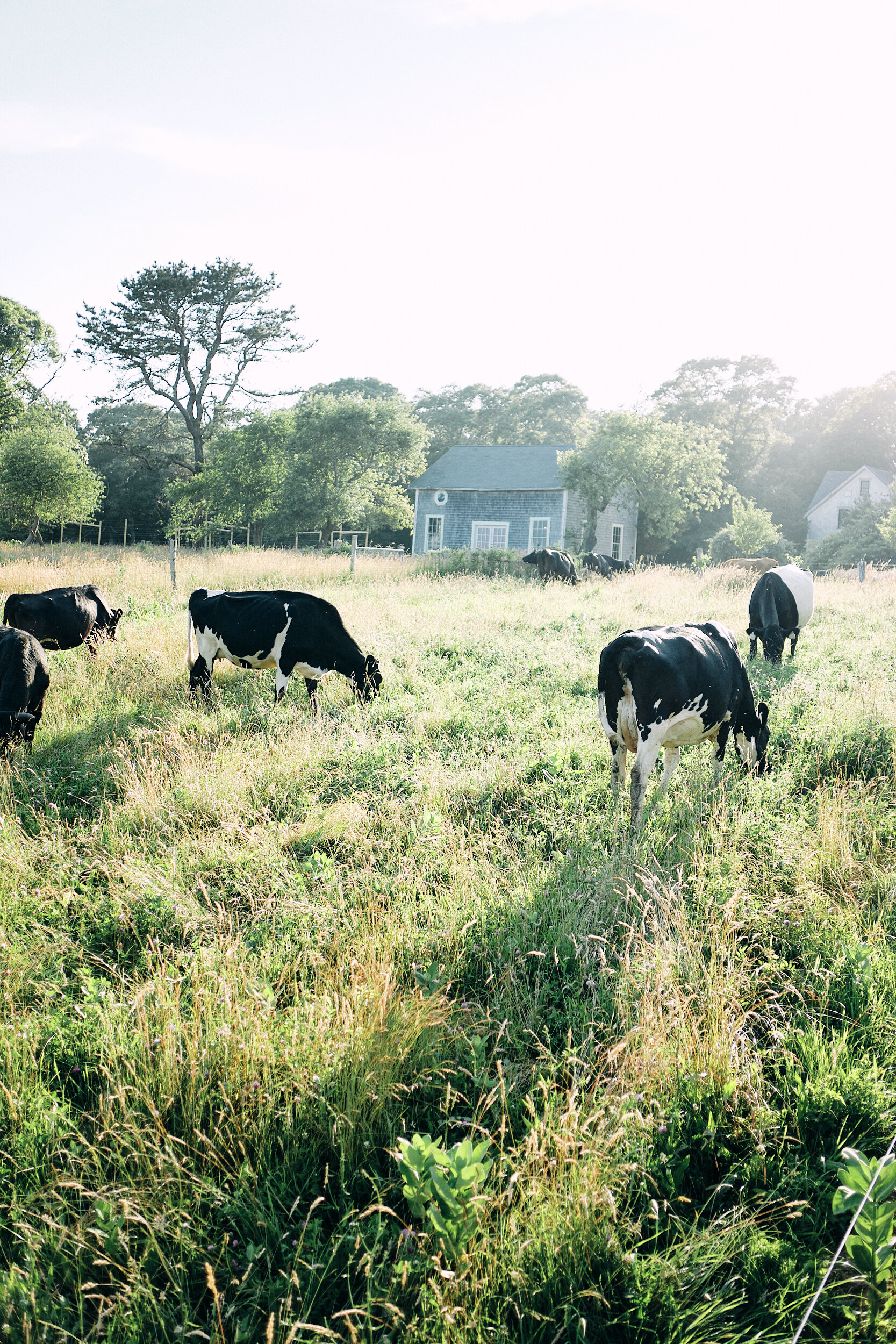cows
beautiful beasts
At The Grey Barn, we maintain a dual-purpose herd of forty-five cows – our “gals.” They supply us with certified organic milk and beef year-round. Cows are friendly, intelligent and curious creatures. Unlike most modern dairies, the genetics of our herd have not been manipulated to work in the modern, grain-fed confinement model. Our cows produce delicious milk on a pastured, grass-based diet. Unlike high-throughput dairy operations, many of our strongest gals continue to produce milk well into their teens.
Over ninety percent of dairy cows in the United States are Holsteins. When we started the farm, we wanted to find a different breed that would thrive in our pasture based system. An animal that didn’t need grain, that wouldn't have difficulty calving, and that could function in our dual-purpose model. We found what we were looking for in the Dutch-Belted & Normande cattle breeds, hailing from Austria and France respectively. We’ve traveled from Maine to Michigan to Pennsylvania piecing our herd together. We knew we’d made the right decision the day our first three cows arrived in 2009.
pasture fed. pasture raised.
“Grass-fed” is something of a buzzword in sustainable agriculture, but desperately few dairy cows are one-hundred percent grass-fed. In fact, most herd managers and agricultural experts agree that one-hundred percent grass-feeding cattle is unsustainable and often unhealthy – local soil conditions can impact the nutritional value of a pasture’s hay, leaving cows short of key nutrients. And shipping large quantities of organic hay holds its own set of environmental costs.
At The Grey Barn, we’ve spent years fertilizing and nurturing our fields with traditional pasture rotation techniques that ensure our hay is as nutritious and healthy as possible. Our cows rely on a diet of open-pasture grass in the summer months and cut-and-preserved hay in the winter months. By the end of 2020, we hope to end all hay imports and sustain our herd on local hay year-round.
our milking parlor
We milk our cows twice a day, every day, all year long. 5:30am and 4pm. We encourage you to come and visit the farm during our afternoon milking; we have large viewing windows built into the parlor so the public can can see our milking process in action cows. Our modern parallel-type milking parlor was designed and built by dairy architect Richard Handfield, and allows the cows to spend as little time as possible inside the parlor.
Unlike a traditional tie-stall parlor, where each cow finds its own slip and waits for its turn to be milked, our parlor independently milks four cows at a time in one of our four stalls. When it’s not their turn to be milked, the cows wait outside the parlor free of any individual restraint. Our parlor is also kept pristine at all times. This has always been of the utmost importance to us. We only bottle raw milk, and it must meet not only the state’s health requirements but also our own stringent cleanliness requirements.






